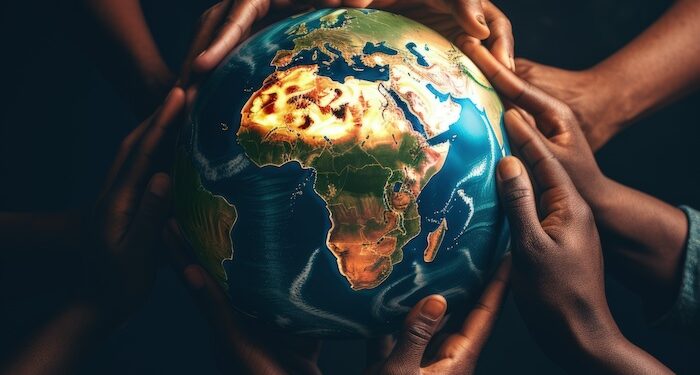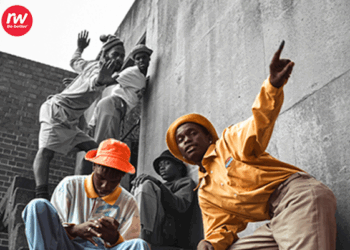The creator economy is reshaping the global marketing landscape, projected to nearly double in value from $250 billion today to $480 billion by 2027.
In Africa, this momentum is even more pronounced. The continent’s share is expected to surge from $3.08 billion to $17.84 billion by 2030; that’s a crazy 28.5% increase that highlights a massive shift in how brands can engage meaningfully across African markets.
This is a cultural and economic opportunity, one that speaks directly to Africa’s next generation of entrepreneurs.
The size of the prize
Africa is home to 54 countries, over 2 000 languages, and more than 1.4 billion people. It is also the fastest-growing region in terms of working-age population. By 2050, over 740 million Africans will be of working age, with 12 million youth entering the labour force annually.
At the same time, internet penetration and smartphone adoption are climbing steadily, creating fertile ground for young Africans to shift from passive consumers to active creators.
Social platforms, digital payment systems and mobile tech are making it easier than ever for creators to monetise their content and build audiences, not just in Mzansi, but across the continent and the globe. This is Africa’s chance to leapfrog into a new era of influence, where creators set global trends.
From influence to impact
The influencer and creator economy presents a powerful spectrum of impact across the marketing funnel. Influencers (those with large followings and broad appeal) excel at creating top-of-funnel awareness. Meanwhile, content creators, often with more niche or culturally embedded audiences, drive deeper engagement, trust and conversion.
Pete Little, chief creative officer at Publicis Groupe Africa, says: “Influencers or celebrity personalities with great reach can raise awareness for brands, but with creators, we are tapping into niche communities with access to a more personal audience connection focusing on building engagement through education and entertainment. It’s not just about the number of followers anymore.”
In the recent #YoutubeMadeForYou campaign, this distinction played out powerfully. In the first phase, influencers drove awareness through YouTube Shorts in South Africa, generating over 3 000 short-form videos celebrating local culture under the #MadeInMzansi banner.
In the second phase, creators and influencers partnered to inspire and enable others, resulting in more than 65 000 pieces of new content, 85 million views and one million new daily users across Africa. By activating creators and influencers at scale, the platform drove exponential content creation and user acquisition, turning passive audiences into active participants and solving the challenge of sustained engagement and daily growth.
Relevance Is the new reach
In a continent as diverse as Africa, relevance cannot be one-size-fits-all. That’s why culturally specific content in local languages, with local nuance, is a non-negotiable for success.
In Nigeria, the content for the #YoutubeMadeForYou campaign was created in Hausa, Yoruba, Pidgin, Igbo and English. South African content featured isiXhosa, Zulu, Afrikaans and English. Kenya followed with Swahili and English assets. Across the campaign, 422 culturally tuned assets were developed, resulting in brand recall increases of +9.6% in Nigeria and +6.5% in South Africa.
This level of customisation speaks to consumers in their own language and improves the brand experience, driving measurable results.
Why brands should care
Globally, 9 out of 10 consumers trust the creators they follow. Among Gen Z and millennials, creator content influences purchasing decisions more than traditional ads. And 63% of consumers say they trust what influencers say about brands more than the brands themselves (Warc).
For marketers, this means real ROI: brands that invest strategically in influencer and creator partnerships see up to 10.7 times better performance in social media marketing outcomes.
Yet the African creator economy remains undercapitalised. The challenge? A lack of Africa-first content, inconsistent access to platforms and insufficient support systems for emerging creators.
That’s why enablement matters. At Publicis Groupe Africa, we look at every creator campaign through four lenses: marketing objectives, audience fit, cultural relevance and partnership structure. And we invest in education, toolkits, and access, not only airtime.
For this economy to thrive long term, it needs structure. Publicis recently supported the launch of the IAB SA and ARB’s first Content Creator Charter, a set of guiding principles that promote transparency, ethics and fairness in influencer partnerships. Because building Africa’s creator economy is about unlocking dignity, income, voice and creative freedom.
Africa’s story, told by Africans
Africa’s creator economy offers a once-in-a-generation opportunity to shape a new narrative. Brands that embrace this shift, from passive advertising to active partnership, from one-size-fits-all messaging to culture-first storytelling, will build equity with Africa.
As we move forward, marketers must ask: Are we just advertising to African consumers or are we helping them tell their stories? The difference is exponential.
Now is the time to shift. From influence to impact.

Ntokozo Nhlanhla is executive creative director at Digitas Liquorice, actively working towards implementing the Digitas Global framework into the local market and also exposing the global Digitas network to South Africa’s world class digital capabilities and amazing talent.














